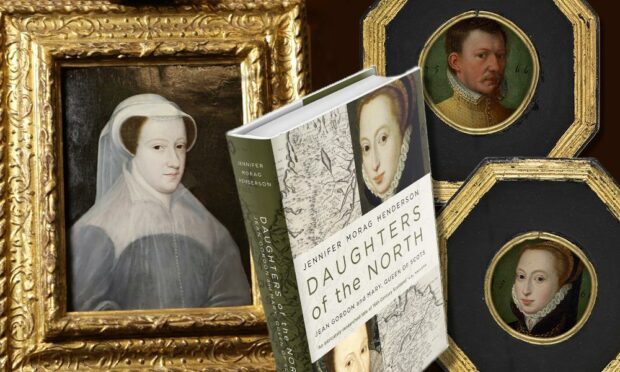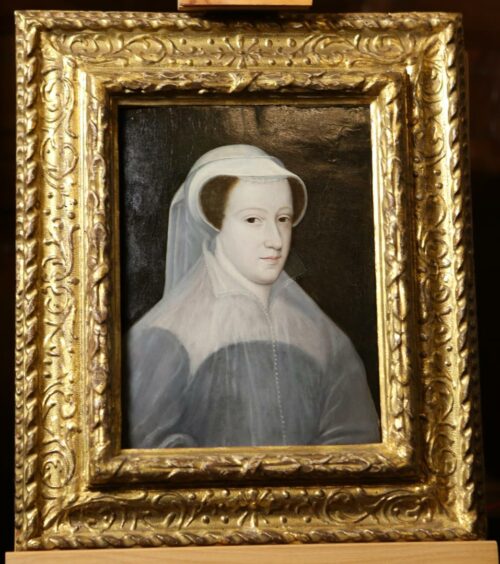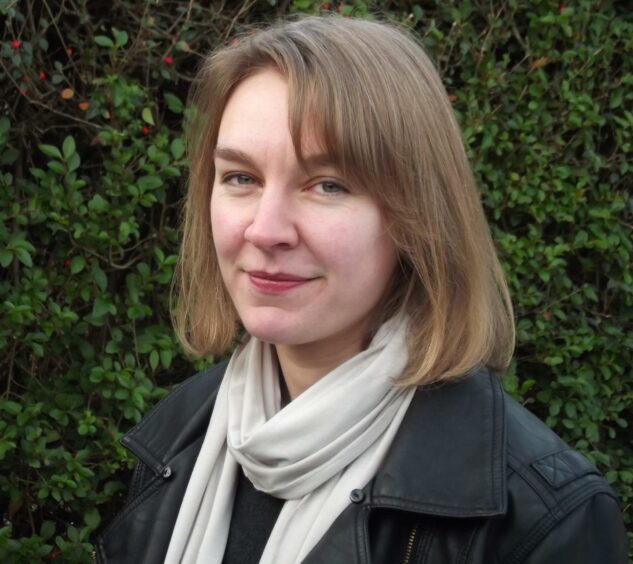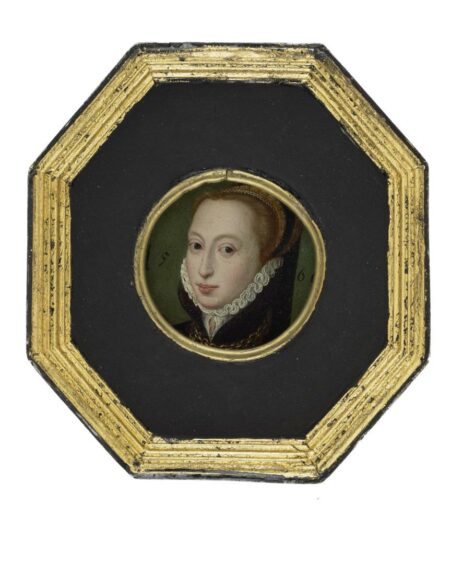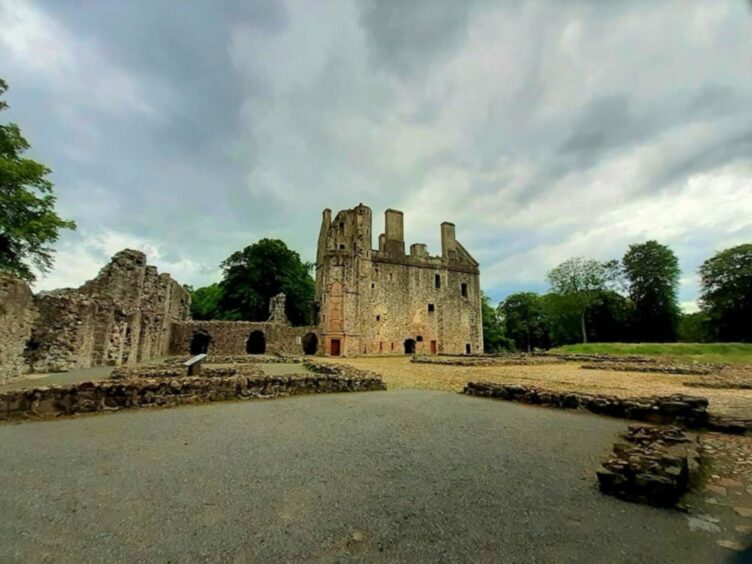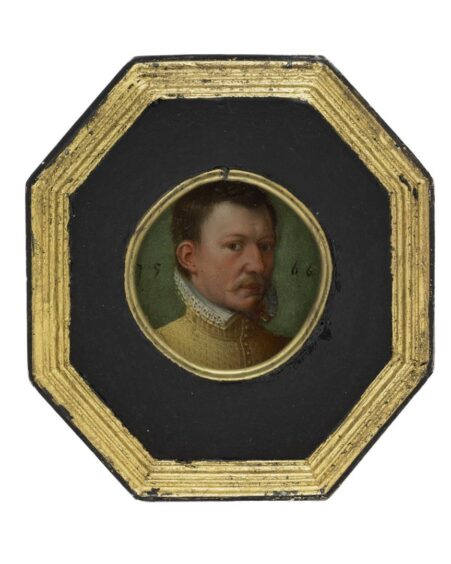Power struggles, cut-throat politics, religious strife – life was a dangerous game for 16th Century Scottish noblewomen.
One of the families at the heart of all the perilous shifting sands of the Tudor/Stewart age was the wealthy Gordon family of Huntly, whose dogged pursuit of power involved every member of the family working to that end no matter the personal sacrifice.
This included daughter Jean (1546-1629), one of 12 children born to the larger-than-life George Gordon, Earl of Huntly.
Due to her sense of family loyalty, she gave up her true love, Alexander Ogilvie of Boyne, to marry someone she loathed, James Hepburn, Earl of Bothwell – only to be divorced by him in the cruellest manner so that he could marry Mary, Queen of Scots.
Author Jennifer Morag Henderson reveals Jean’s extraordinary life in her deeply-researched new book, Daughters of the North (Sandstone Press).
Happy ending during time of turmoil
Jennifer, from Inverness, has worked on the story for years, even going to the lengths of doing a course in palaeography to learn how to read previously unpublished letters by Jean and her son and grandson, written in Scots.
She said: “In the story of Mary, Queen of Scots, people tend to follow her to England, and forget about the mess she left behind in Scotland.
“It was so chaotic, particularly in the north of Scotland.
“Jean’s lifetime was a particularly bad time for feuding amongst the clans after the last claimant to the Lordship of the Isles had died.
“Her first husband she was told to marry, and the second one she was told to marry, but it kind of works and they do have a happy marriage, but the third one is her choice.
“There’s no reason for her to marry a third time, but she does and it’s to the love of her life Alex Ogilvie.
“That’s one of the first things that attracted me to this story.”
A happy ending at a time of regicide, bitter clan warfare, the Reformation, the opening up of the New World, turmoil in Europe.
Mary had returned to Scotland in 1561 on the death of her first husband, Francis, the Dauphin of France.
She was 19 and, Jennifer believes, ill-equipped to understand the true challenges of the throne of Scotland.
Shaky relationship with the Queen
Among her chief advisors was her half-brother, James Stewart, Earl of Moray, the Gordon family’s deadliest foe.
The Gordons had a somewhat shaky relationship with the Queen, the Earl of Huntly having given great offence to her mother Mary of Guise when she came to stay at Huntly castle.
Thinking to impress her, Huntly had spared no expense in showing off his considerable wealth, to the extent that Mary turned against him and ostracised the family, favouring Moray who hatched various vicious plots to destroy his enemy.
The Gordons had been on the proverbial ‘shoogly peg’ with the centre of power for some time, particularly since they were known Catholics at a time when Scotland had become firmly Protestant.
No one much believed Huntly when he swore total allegiance to the throne, and Protestantism – and basically whatever blustering he thought would see him into the corridors of power.
Mary however decided she would take the Gordon girls under her wing, and Jean became one of her ladies.
It was at her insistence that Jean married James Hepburn, the 4th Earl of Bothwell, Mary’s attempt to bring the two ends of Scotland which supported her together.
It was one of Mary’s few shrewd moves after she realised she needed to counterbalance the power and ambition of the Earl of Moray.
Jennifer has a fascination for Bothwell, despite the terrible things he did.
“He was a complex character, but he had a big following and charisma.
“Jean didn’t want to marry him and made it so abundantly clear it became the subject of songs and gossip.
Jean Gordon mourned lost love
“She even appeared after her wedding day dressed in mourning for her lost love.
“But from the marriage Bothwell went up a social notch, and had his debts cleared in exchange for giving Jean land in the Borders.”
Bothwell’s subsequent treachery in divorcing her and his marriage to Mary is well-documented, but far from taking the role of down-trodden cast off, Jean married again in the interests of her family.
Her second marriage was to another Gordon, Alexander, Earl of Sutherland, eventually giving her dominion over the vast Sutherland estates and making her the most powerful woman in the north of Scotland.
Meanwhile, she also had to watch her first and only love Alexander Ogilvie married off to Mary Beaton, one of the Queen’s celebrated quartet of ladies-in-waiting, with Bothwell as one of the witnesses.
The Earl of Sutherland died in 1594, and Mary Beaton in 1598.
At the age of 54, Jean finally got to follow her heart and married Alexander in 1599, having become one of the most powerful women in Scotland, taking on the administration of the Sutherland estates and leaving them in admirable shape.
It’s thought Alexander didn’t live for many years after the marriage.
Jean died in 1629, with instructions that she was to be buried with the full honours usually only accorded to earls.
Jennifer said: “She had witnessed the court moving to England, James VI, Charles I and huge global changes with the opening up of the New World.
“One of her sons with Sutherland became Baronet of Nova Scotia.
“Jean’s story and legacy was far more than a local one, it was global.”
